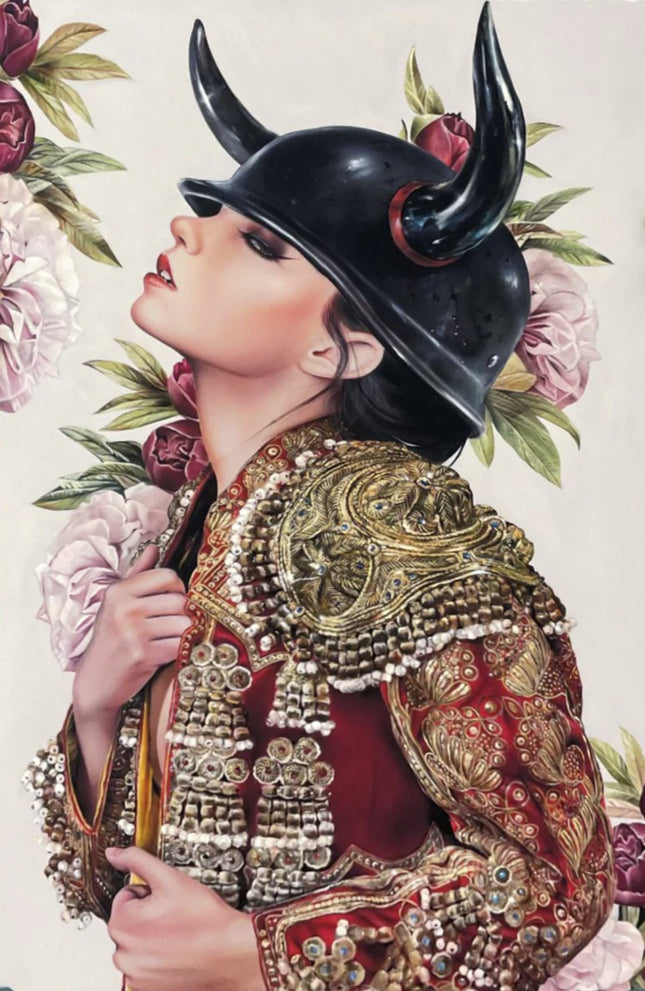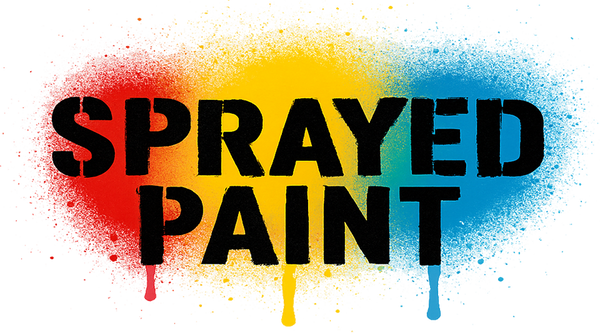
Flowers & Plants
-

Brian Viveros Lonely Bull Giclee Print by Brian Viveros
Lonely Bull Giclee Print by Brian M Viveros Pop Street Artwork Limited Edition Print on Hand Deckled 290gsm Moab Entrada Paper Pop Street Artist. 2022 Signed & Numbered Limited Edition of 66 Artwork Size 18x27 Printed by Static Medium Lonely Bull by Brian M. Viveros: A Bold Statement in Street Pop Art The Lonely Bull giclee print by Brian M. Viveros represents a striking intersection of strength, femininity, and symbolic power within the genre of Street Pop Art and Graffiti Artwork. Created in 2022, this limited-edition print is produced on hand-deckled 290gsm Moab Entrada paper, showcasing the artist’s commitment to craftsmanship and quality. With only 66 signed and numbered pieces in existence, the artwork offers an exclusive opportunity for collectors to own a piece of Viveros’s evocative and highly detailed creations. Printed by Static Medium, the piece measures 18 by 27 inches and stands out as a captivating example of contemporary art. In Lonely Bull, Viveros presents a striking figure adorned in an ornate matador jacket, embellished with intricate gold embroidery. The character’s defiant pose and the bullhorned helmet fuse themes of resilience and vulnerability. The backdrop of soft, blooming roses juxtaposes the character’s armor-like attire, creating a contrast between beauty and strength. Viveros’s attention to detail is evident in every element, from the texture of the fabric to the gleaming surface of the helmet, making this print an exquisite tribute to his distinctive style. Symbolism and Strength in Street Pop Art Brian M. Viveros is renowned for his bold depictions of empowered female figures, often incorporating themes of battle, resilience, and allure. The Lonely Bull giclee print exemplifies this ethos, using a combination of hyper-realistic techniques and symbolic elements. The bullhorned helmet represents defiance and power, evoking the fierce energy of a matador. By pairing this imagery with the delicate roses in the background, Viveros emphasizes the duality of strength and beauty, a recurring motif in his work. This piece reflects the influence of Street Pop Art by merging bold visual storytelling with the gritty, unapologetic energy found in urban art. The striking contrast between the soft floral elements and the imposing armor creates a narrative that resonates with themes of personal battles and triumphs. The figure’s expression and posture convey confidence and determination, inviting viewers to interpret the story behind the Lonely Bull. The Art of Giclee Printing and Hand-Deckled Presentation The giclee printing process used for Lonely Bull ensures exceptional quality and durability, preserving the rich tones and fine details characteristic of Brian M. Viveros’s work. Printed on 290gsm Moab Entrada paper, the artwork achieves a museum-quality finish with a luxurious texture. The hand-deckled edges add an artisanal touch, elevating the presentation and making each print a unique collector’s item. This meticulous attention to detail reflects the artist’s dedication to his craft and his collaboration with Static Medium, a studio known for its excellence in fine art printing. Each print in the limited edition of 66 is signed and numbered by Viveros, ensuring authenticity and exclusivity. This combination of technical mastery and artistic intent positions Lonely Bull as a standout piece in contemporary Street Pop Art and Graffiti Artwork. Brian M. Viveros and the Evolution of Pop Street Art Brian M. Viveros has established himself as a significant figure in Street Pop Art and Graffiti Artwork, known for his striking portrayals of powerful, battle-worn women. His work often draws inspiration from cinematic and cultural icons, blending realism with surrealism to create images that are both provocative and empowering. Lonely Bull exemplifies his unique ability to tell compelling visual stories that resonate with a wide audience. Through his art, Viveros challenges traditional notions of femininity and strength, presenting his characters as resilient and unapologetic. The Lonely Bull giclee print serves as a testament to his ability to blend intricate detail with bold symbolism, creating works that captivate and inspire.
$360.00


